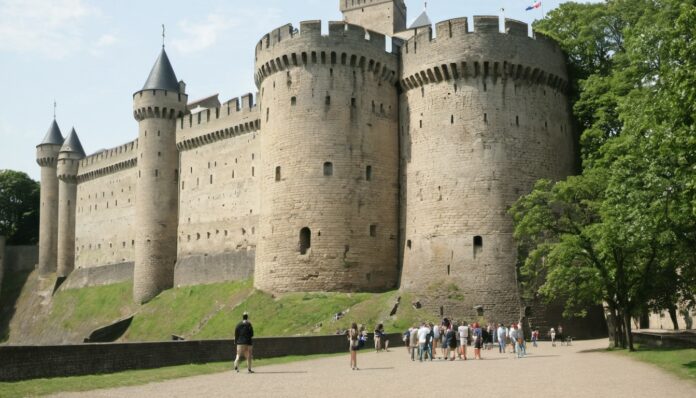The Bastille was a fortress in Paris, best known for its role in the French Revolution. It started as a prison for political prisoners, and its storming on July 14, 1789, marked the beginning of the revolution. This event is celebrated annually in France as Bastille Day, symbolizing the fight for freedom and the end of tyranny.
Interesting Facts About the Bastille
- The Bastille was originally built as a fortress in the 14th century.
- It was located in the east of Paris, near the Seine River.
- The Bastille was used to defend Paris from English attacks during the Hundred Years’ War.
- It was converted into a state prison by Cardinal Richelieu in the 17th century.
- The Bastille could hold up to 50 prisoners at a time.
- It became a symbol of royal authority and oppression.
- The Bastille had eight towers connected by thick walls.
- It had a moat surrounding it for additional defense.
- Famous prisoners included the Marquis de Sade and the “Man in the Iron Mask.”
- The storming of the Bastille took place on July 14, 1789.
- The fall of the Bastille marked the start of the French Revolution.
- Only seven prisoners were found in the Bastille at the time of its storming.
- The governor of the Bastille, Bernard-René de Launay, was killed by the mob.
- The storming of the Bastille led to widespread unrest across France.
- The Bastille was demolished by revolutionary forces shortly after its capture.
- The bricks from the demolished Bastille were sold as souvenirs.
- A key from the Bastille was sent to George Washington as a gift by the Marquis de Lafayette.
- The site of the Bastille is now the Place de la Bastille, a bustling square in Paris.
- The July Column, erected in the Place de la Bastille, commemorates another revolution in 1830.
- Bastille Day, celebrated on July 14, is France’s national holiday.
- Bastille Day is marked by fireworks, parades, and parties across France.
- The original foundations of the Bastille can still be seen in the Bastille metro station.
- The Bastille’s capture was fueled by the need for gunpowder stored inside.
- The French National Guard, led by Lafayette, played a key role in the storming.
- The Bastille’s fall was depicted in many artworks and literature.
- It inspired revolutionary movements worldwide.
- The Bastille’s storming was initially seen as a minor event but grew in significance.
- The fortress-prison was a symbol of the Ancien Régime’s tyranny.
- Some remnants of the Bastille are displayed at the Carnavalet Museum in Paris.
- The storming of the Bastille is considered a defining moment in world history, representing the struggle for liberty and justice.
